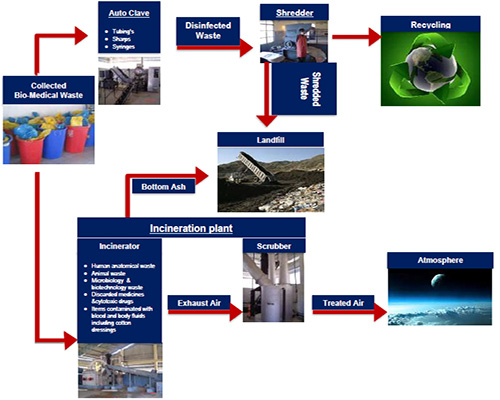

Segregation is an important element in efficient healthcare waste management. The Compendium talks about segregation of medical waste. Infectious waste is waste that is suspected to contain pathogens (disease-causing bacteria, viruses, parasites, or fungi) in sufficient concentration or quantity to cause disease in susceptible hosts.įront cover of the Compendium. In general, between 75 and 90 per cent of the waste produced by healthcare facilities is non-risk (non-infectious, non-hazardous) general waste, comparable to domestic waste. Healthcare waste can be categorized according to the following general classifications: sharps waste, pathological waste, other infectious wastes, pharmaceutical waste including cytotoxic waste, hazardous chemical waste, radioactive waste, and general (non-risk) waste.

Which kind of medical waste is most risky in terms of spreading infectious diseases? The compendium provides a robust methodology for analysing local healthcare waste generation, composition and disposal needs and selecting appropriate technologies as part of a local waste management system. Because of this huge diversity, there is no single best solution to dealing with medical waste.

However, this figure, and the underlying composition of the waste, varies enormously depending on local context, with higher-income countries generating far higher levels of waste and plastic, for example, often making up more than half of all medical waste. How much medical waste does an average hospital produce?Īn assessment of waste generation rate data from around the world shows that about 0.5 kg per bed per day is produced in hospitals. Open burning and incineration without adequate pollution control exposes waste workers and the surrounding community to toxic contaminants in air emissions and ash. Improper treatment and disposal of healthcare waste poses serious hazards of secondary disease transmission due to exposures to infectious agents among waste pickers, waste workers, health workers, patients, and the community in general where waste is improperly disposed. Although hospitals produce the bulk of healthcare waste by volume, they are a small fraction of the total number of sources. Healthcare waste is all the waste generated by healthcare facilities, medical laboratories and biomedical research facilities, as well as waste from minor or scattered sources. It can help those with responsibility for planning and managing the significant increase in medical waste as a result of this global pandemic. The compendium is intended to assist national and local governments, health organizations and countries in assessing and selecting appropriate technologies for the destruction of healthcare waste. Please describe the document and how it can help in this current pandemic? The Centre has produced a Compendium of Technologies for Treatment/Destruction of Healthcare Waste, a scientific and practical publication covering all aspects of medical waste-a topic that is highly relevant to the current novel coronavirus COVID-19 pandemic. Interview with Keith Alverson, Director of the United Nations Environment Programme (UNEP) International Environmental Technology Centre in Osaka, Japan.


 0 kommentar(er)
0 kommentar(er)
